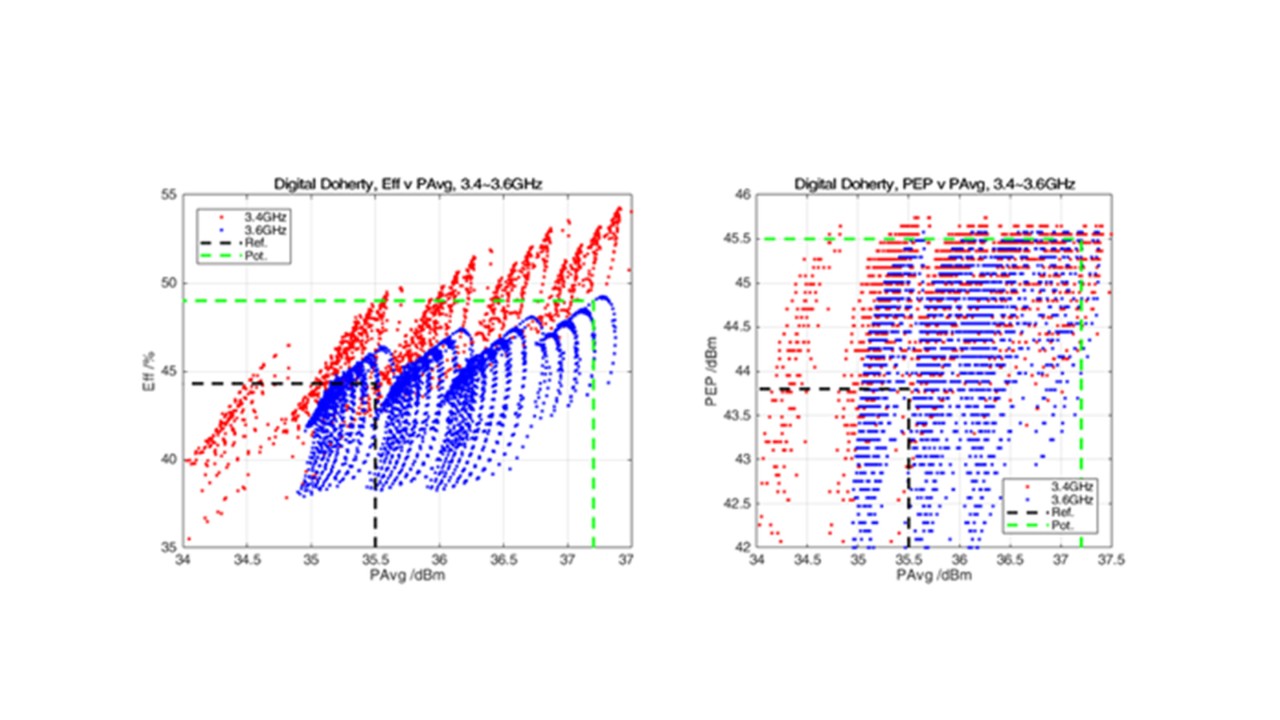The post-processing of non-linear results can potentially be more expansive than with the linear result dataset. With the linear sweep measurement results to be used as a reference, the engineer is enlightened with the limit of performance capability.
Here, the average versus peak envelope power data is plotted. Whereas the reference linear design offered a 35,5dBm average power and 43,8dBm saturated power, the introduction of shaping prior to the final stage has increase the saturated power capability by 1,7dB (or 47%).
The engineer may leverage this bonus power in different ways.
- 1. It can be left as-is, and significant output power margin has been built-in.
- 2. The design can be re-specified for 37,2dBm (whilst maintaining similar peak envelope headroom), whilst also taking advantage of a 5%-pts efficiency boost
- 3. The design can be remade, using devices which are up to 47% smaller and similarly lower cost (and intrinsically more efficient anyway).
- 4. The original 35,5dBm/44% efficiency specification may be written over a wider bandwidth.








